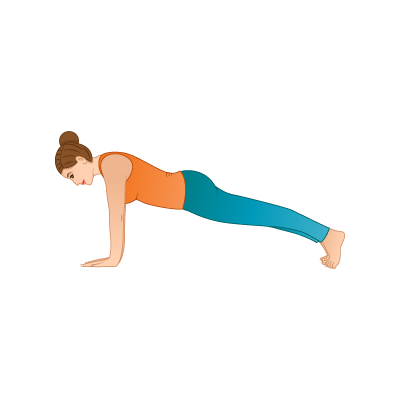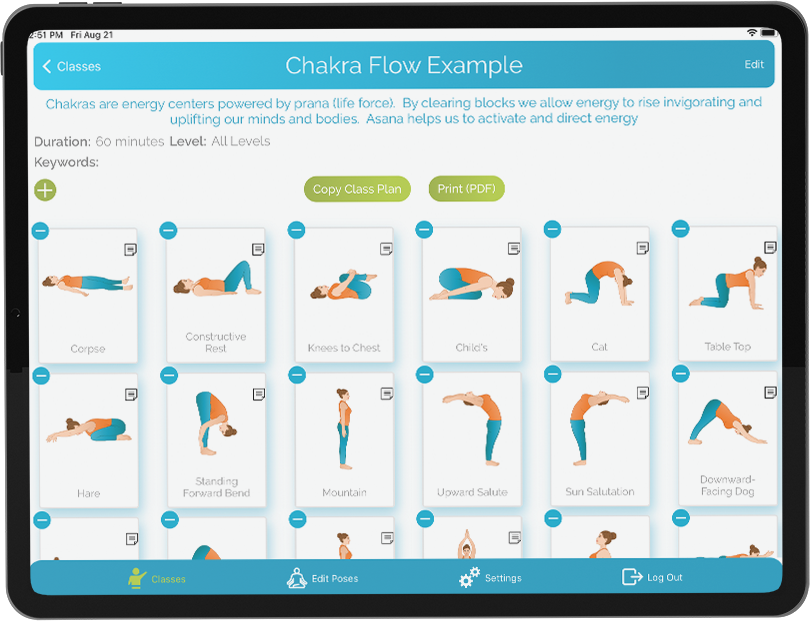10 Rules for Planning Your Yoga Class
December 8, 2017 | 5 min read
No matter the style of yoga you were trained in, odds are likely that you were taught a basic way to sequence your class. While those first sequences are wonderful for getting your feet wet at the front of the studio, often they lack some essential knowledge about how to plan your class so that you feel good about what you’re teaching and your students walk away feeling that yoga bliss they are seeking.
Set Your Intention
What is the intention you want for this class? Do you want to provide something grounded, calming, energizing? Figure out what your intention is and your class planning will become a whole lot easier.
Choose A Theme
A theme will help inform the poses you pick for your class. Not only that, your theme can trickle down across the music you play and even the verbiage you use in class. Choosing a theme can be tough, but there are a few ways to go about finding one.
- Choose something based around the time of year
- Hone in on the social climate and find a neutral message like kindness, compassion, caring, etc.
- Chose a natural event, like the full moon or new moon
- Select a feeling as your theme
Consider The Demographics of Your Class
It is incredibly important to teach to those that show up. If you only teach advanced postures, but you have a room full of beginners, it will be unlikely to work for the majority of people in the class. Think about the average student that attends your class and then design your sequence with that specific skill level in mind.
Think About The Time of Day
The time of day you teach is an important factor to consider. Morning classes will be better served with a more vigorous and warming practice, while evening classes can lend themselves to slower flows and more restorative practices.
Find a Piece of Inspiration
Whether you find a quote, short story or vivid imagery, adding an element of inspiration that is in line with your intention and them will leave students with something to digest. This will allow students a point of focus and something to take away from their practice with them.
Choose Your Postures
Whether you are working towards a particular posture or simply guiding students through a full body stretch, the poses you choose should complement each other.
For example;
If you are working towards a deep backbend, choose postures that warm up the supporting areas as well as counter postures that will help to provide release after the back bend.
In choosing postures you should ensure that each class you design allows for a proper warm up and that postures are done in an order that compliments the ones done prior to and after the pose, you are teaching. Be sure to allow for ample cooldown periods at the end of every practice so that students can comfortably make their way through savasana.
Find a Balance Between Static and Dynamic Poses
Utilizing dynamic movements like the Sun Salutations is great, but if you only stick with dynamic style poses you run the risk of burning your students out! That is why it is best to design a practice with a proper balance between static and dynamic poses.
Allow For Moments of Rest
Always account for resting postures between more vigorous series. Offering a child’s pose or a happy baby pose after a difficult sequence will allow students the chance to rest and come back to their breath. These moments of rest also make a great time to insert your inspirational quote or imagery to call them back to their mat.
Add In Elements of Complexity
No matter the style of yoga you teach, the elements of pranayama, mantra, mudra, and affirmation can layer in an element of complexity that is not always offered in asana focused practices. These things should be in line with your theme and intention, but should also give students insight into the broader realm of yoga.
You can also add in complexity by offering enhancements to postures you are instructing. This way people of all levels will have an offering in your class. For example, as you queue people into a simple twist, encourage those that feel they can maneuver further to take a bind with their twist.
Try The Sequence For Yourself
oga teachers are the ultimate yoga student, which is why you should try your sequences out for yourself. In moving through your sequence, you will be able to see what works and what might need some adjusting.
Keep in mind that planning a yoga class can be a little difficult at first. Once you realize you can follow a few simple steps you will be creating smart, functional, and fun classes every time!
Posted in Methodology, Teaching Resources, Teaching Tips
Tags: yogaclassplan




